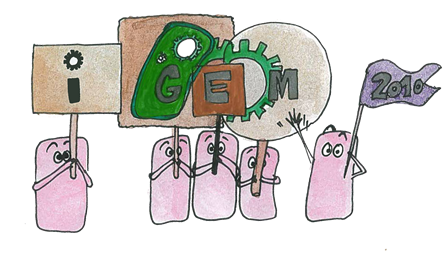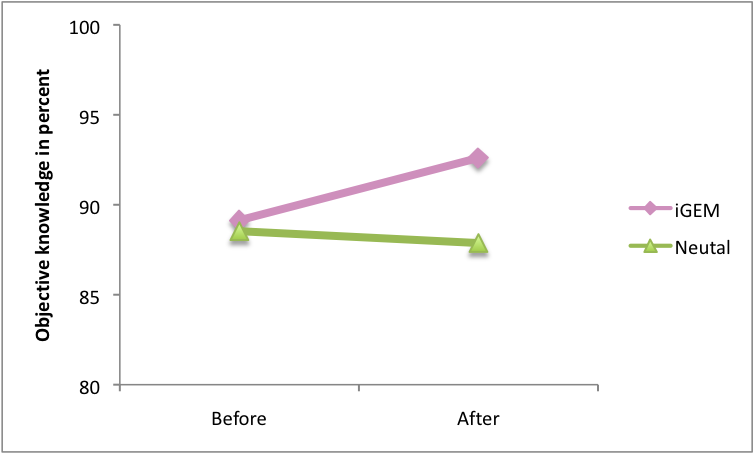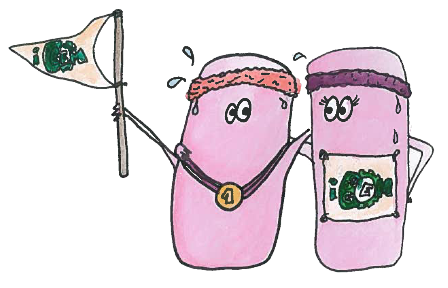Team:EPF Lausanne/Humanpractices
From 2010.igem.org
(→Results) |
(→Results) |
||
| Line 26: | Line 26: | ||
= Results = | = Results = | ||
| - | *''' | + | *'''Our movie increases the objective knowledge''' |
| - | There are two kinds of knowledge we are interested in: the subjective knowledge and the objective knowledge. The subjective knowledge is the grade that people give to themselves, it is a measure of what they think they know about synthetic biology, on a scale from 0 to 100. The objective knowledge is based on 12 questions that test the knowledge of the people before and after the movie. Each question gives 1 point if it is correct or 0 if it is not. The total was scaled to 100 | + | There are two kinds of knowledge we are interested in: the subjective knowledge and the objective knowledge. The subjective knowledge is the grade that people give to themselves, it is a measure of what they think they know about synthetic biology, on a scale from 0 to 100. The objective knowledge is based on 12 questions that test the knowledge of the people before and after the movie. Each question gives 1 point if it is correct or 0 if it is not. The total was scaled to 100 (Figure 1). The results show that the objective knowledge significantly increased after watching our movie whereas the neutral movie did not help to answer the questions. That means that people understood this movie and learned from it. Moreover we get the same pattern when we analyse the questions related to synthetic biology in general (8 questions) and the questions related to our project (4 questions) separately. The subjective knowledge also increased after watching our movie but so did it for the neutral control (Figure 2). |
| + | [[Image:Obj_knowledge.png|left|349px]] | ||
| + | [[Image:Sub_knowledge.png|349px]] | ||
| - | |||
| - | |||
| - | *''' | + | *'''Our movie does not change the attitude of the viewer towards Synthetic Biology''' |
| - | + | We asked the viewers to both evaluate their positive and negative feelings about Synthetic Biology. This allowed us to evaluate the different aspects of the subject one could consider: promising as well as potentially dangerous or harmful effects at the same time. | |
| - | + | ||
| - | + | The results tell us that the positive attitude tends to decrease (Figue 3). But we see that the neutral video decreases it even more so we cannot say that it is due to the talk about synthetic biology. We see that our iGEM movie has no effect on the negative attitude (Figure 4). | |
| - | This | + | |
| - | The results tell us that the positive attitude tends to decrease. But we see that the neutral video decreases it even more so we | + | |
| Line 50: | Line 48: | ||
| - | *'''Emotions''' | + | *'''Emotions tend to become slightly more negative''' |
| - | We were also interested in emotions that could be triggered by the movie. So we asked people how much they feel | + | We were also interested in emotions that could be triggered by the movie. So we asked people how much they feel scared, nervous, afraid (negative emotion), interested, alert, enthusiastic (positive emotion). |
| - | We see that the | + | We see that the positive emotions decrease for both movies (Figure 5), but we see a little but significant increase in negative emotions that was triggered by our movie (Figure 6). |
| Line 60: | Line 58: | ||
| - | Theses results are quiet expected if we look at other | + | Theses results are quiet expected if we look at other studies in the literature about genetic manipulations, like cloning or genetically modified organisms. It confirms that even when people understand the subject, this is not necessarily accompanied by an increase in positive attitude regarding these subjects. Rather, more knowledge can make people more cautious and nervous, even if the population tends to support some very promising and needed applications of bioengineering. |
=Running for iGem= | =Running for iGem= | ||
Revision as of 20:59, 26 October 2010


Movie
We made an animated movie presenting our project. This will allow us to introduce synthetic biology in a funny way to a broad public. To measure the educational impact of our movie, we created a survey and had 2 groups of people answer it. To one group we showed our movie, to the other we showed a "neutral" one. We hope that making a simple and funny movie will make the public more aware of the benefits synthetic biology can bring to the society.
Results
- Our movie increases the objective knowledge
There are two kinds of knowledge we are interested in: the subjective knowledge and the objective knowledge. The subjective knowledge is the grade that people give to themselves, it is a measure of what they think they know about synthetic biology, on a scale from 0 to 100. The objective knowledge is based on 12 questions that test the knowledge of the people before and after the movie. Each question gives 1 point if it is correct or 0 if it is not. The total was scaled to 100 (Figure 1). The results show that the objective knowledge significantly increased after watching our movie whereas the neutral movie did not help to answer the questions. That means that people understood this movie and learned from it. Moreover we get the same pattern when we analyse the questions related to synthetic biology in general (8 questions) and the questions related to our project (4 questions) separately. The subjective knowledge also increased after watching our movie but so did it for the neutral control (Figure 2).
- Our movie does not change the attitude of the viewer towards Synthetic Biology
We asked the viewers to both evaluate their positive and negative feelings about Synthetic Biology. This allowed us to evaluate the different aspects of the subject one could consider: promising as well as potentially dangerous or harmful effects at the same time.
The results tell us that the positive attitude tends to decrease (Figue 3). But we see that the neutral video decreases it even more so we cannot say that it is due to the talk about synthetic biology. We see that our iGEM movie has no effect on the negative attitude (Figure 4).
- Emotions tend to become slightly more negative
We were also interested in emotions that could be triggered by the movie. So we asked people how much they feel scared, nervous, afraid (negative emotion), interested, alert, enthusiastic (positive emotion). We see that the positive emotions decrease for both movies (Figure 5), but we see a little but significant increase in negative emotions that was triggered by our movie (Figure 6).
Theses results are quiet expected if we look at other studies in the literature about genetic manipulations, like cloning or genetically modified organisms. It confirms that even when people understand the subject, this is not necessarily accompanied by an increase in positive attitude regarding these subjects. Rather, more knowledge can make people more cautious and nervous, even if the population tends to support some very promising and needed applications of bioengineering.
Running for iGem
During the summer we met a few mornings to run along the lake (and sometimes even swim!!!) before going to the lab... The ultimate aim is to run the Lausanne Marathon (quarter or half of it) !!! Sunday 31 October we'll run for iGem!!!

 "
"



















